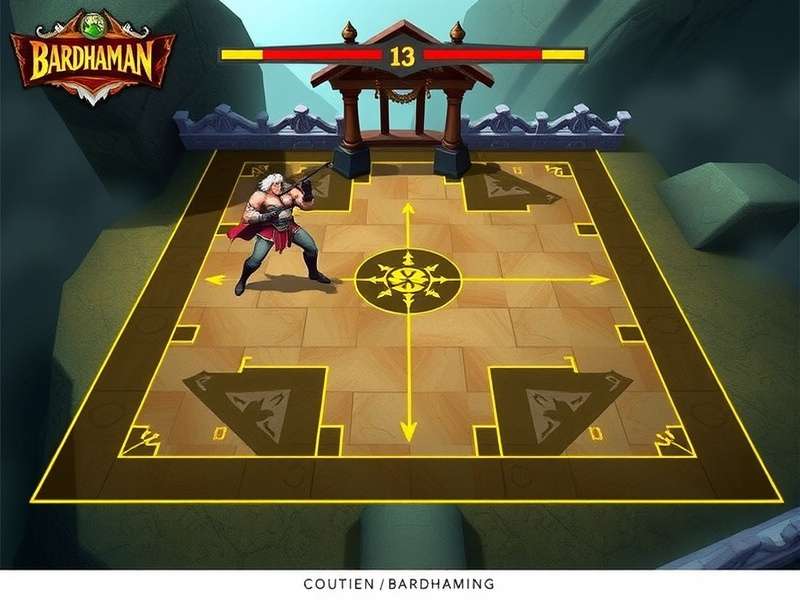Overview of Bardhaman Smash
Bardhaman Smashis a traditional Indian racket sport that originated in the Bardhaman district of West Bengal. This exciting game combines elements of badminton, tennis, and traditional Indian ball games to create a unique sporting experience.
The game is played with lightweight rackets and a specialized shuttlecock-like projectile. What makesBardhaman Smashparticularly distinctive is its scoring system and court dimensions, which vary based on regional preferences and available space.
Key Fact
Bardhaman Smash is played by an estimated 5 million people across India, with particularly strong participation in West Bengal, Bihar, and Jharkhand.
Unlike many Western racket sports,Bardhaman Smashemphasizes wrist flexibility and quick reflexes over pure power. The game's unique mechanics require players to develop specialized techniques that aren't found in other similar sports.

Historical Development
The origins ofBardhaman Smashcan be traced back to the late 19th century in rural West Bengal. The game evolved from traditional folk games played during harvest festivals and religious celebrations.
1890s: Early Beginnings
The earliest form of the game used handmade rackets crafted from bamboo and woven palm leaves. The projectile was typically made from feathers and small stones wrapped in cloth.
1920s: Formalization
Standardized rules began to emerge as the game spread beyond Bardhaman district. The first recorded tournament took place in 1923 with participants from neighboring villages.
1950s: Post-Independence Growth
Following India's independence, traditional games experienced a resurgence. Bardhaman Smash gained popularity as a symbol of cultural heritage and regional pride.
1980s-Present: Modern Era
The game underwent significant modernization with standardized equipment and formal governing bodies. International exhibition matches began in the early 2000s.
Throughout its development,Bardhaman Smashhas maintained its cultural roots while adapting to contemporary sporting standards. The game's evolution reflects broader social and cultural changes in Indian society.
Game Rules and Regulations
The official rules ofBardhaman Smashhave been refined over decades to create a balanced and exciting competitive experience. Understanding these rules is essential for both players and enthusiasts.
Scoring System
Matches are played in a best-of-three sets format. Each set is played to 15 points, with a minimum 2-point advantage required to win. If the score reaches 14-14, play continues until one player achieves a 2-point lead.
Court Dimensions
The standard court measures 13.4 meters in length and 6.1 meters in width for singles matches. Doubles courts add 1.5 meters to the width. The net stands at 1.55 meters high at the center.
Serving Rules
Servers must strike the projectile below waist level with an underhand motion. The serve must travel diagonally to the opponent's service court. Let serves (where the projectile touches the net but lands in) are replayed.

Faults and Violations
Common faults include touching the net with any part of the body or racket, hitting the projectile outside the court boundaries, and double hits. Unsportsmanlike conduct can result in point penalties or disqualification.
Playing Techniques and Strategies
MasteringBardhaman Smashrequires developing a diverse set of techniques and strategic approaches. The game's unique characteristics demand specialized skills that distinguish it from other racket sports.
Fundamental Strokes
The basic strokes in Bardhaman Smash include the forehand drive, backhand push, overhead clear, and the namesake smash shot. Each stroke requires precise wrist action and timing to execute effectively.
Pro Tip
Advanced players often develop a deceptive wrist action that makes their shots difficult to read, giving them a significant competitive advantage.
Advanced Strategies
Successful players employ complex strategies involving court positioning, shot selection, and psychological tactics. The ability to anticipate an opponent's moves and control the tempo of the game are hallmarks of expert play.
Different playing styles have emerged within theBardhaman Smashcommunity, ranging from aggressive attackers who rely on powerful smashes to defensive specialists who excel at retrieving difficult shots.

Training Methods
Traditional training for Bardhaman Smash emphasizes footwork drills, wrist strengthening exercises, and reaction time improvement. Modern training incorporates sports science principles while respecting traditional methods.
Cultural Significance and Impact
Bardhaman Smashholds a special place in Indian cultural heritage, particularly in West Bengal where it originated. The game is more than just a sport—it's a social activity that brings communities together.
Traditional tournaments often coincide with festivals and community celebrations, creating a festive atmosphere that extends beyond the competition itself. These events feature music, food, and cultural performances alongside the sporting action.
Community Impact
Local Bardhaman Smash clubs often serve as community centers where people of all ages gather, strengthening social bonds and preserving cultural traditions.
The game has also found representation in Indian popular culture, appearing in films, literature, and television shows. This media presence has helped introduceBardhaman Smashto new audiences both within India and internationally.
Efforts to preserve and promote Bardhaman Smash continue through schools, community organizations, and government initiatives. These programs aim to ensure that future generations can enjoy this unique aspect of Indian sporting heritage.
As India continues to modernize, games likeBardhaman Smashplay an important role in maintaining connections to cultural roots while adapting to contemporary society. The game's enduring popularity demonstrates the lasting appeal of traditional sports in a rapidly changing world.